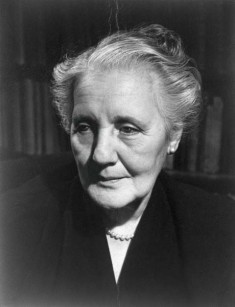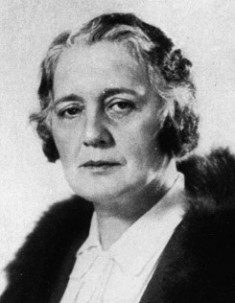| Melanie Klein | |
|---|---|
 |
|
| Psychologist | |
| Born | Mar. 30, 1882 Vienna, Austria-Hungary |
| Died | Sep. 22, 1960 (at age 78) London, England |
| Nationality | Austrian |
Melanie was a famous Austrian-born, British psychoanalyst. She devised novel therapeutic techniques for young children. This has a great impact on child psychology and contemporary psychoanalysis. She was also the leading innovator in theorizing object relations theory.
Early Life
Melanie was born on March 30, 1882, in Vienna, Austria. She was born in a Jewish family. Her dad was Moriz Reisez and he was a great inspiration to Melanie. By the time she was five years old, the family inherited a lot of money to purchase a dental practice.
In this occupation, her father was very successful and the family even moved to a new and bigger apartment. When Melanie was 18, her father passed away. During her early years, Melanie was closer to her mother, Libusa. Her family was not particularly religious; Melanie considered herself atheist throughout her life.
Two of Melanie’s siblings died at very young ages. Her second eldest sister helped Melanie learn how to read. At age 19, she became engaged to Arthur Klein, who was a good friend of her own brother. During the two years of her marriage, Melanie studied history and art at Vienna University.
She later dropped out of medical school to be with her husband who often moved to due to his business life. Due to this move, she never received her academic degree. All through her career, many people never respected her views or even take her seriously because of her lack of qualified medical training.
The Start of a Career
While traveling to work in Slovakia, Melanie skipped home and this meant her marriage was seriously affected. She diverted her attention to books and started learning different languages to fill the voids in life. In 1910, her family made the move to Budapest and this totally changed her life. Here, she encountered Freud’s work for the very first time.
After this, psychoanalysis became her major interest. She decided to get analysis with his colleague Ferenczi and together with his support, she started to analyze young children. Shortly thereafter, in 1917, she met Sigmund Freud.
Child Analysis
During this time, Melanie Klein got introduced to Mr. Karl Abraham. Melanie was very impressed and he even encouraged her to practice child analysis. In 1921, she moved to Berlin to start psychoanalytical practice with adults and kids. Here, the psychoanalytic techniques she applied made it easier for her to help the emotionally disturbed kids. She held the position for five years until 1926.
Without Abraham’s support, Melanie’s work was in most cases criticized. During this time, Anna Freud began her work with young children and their approaches were very different. In 1925, Melanie Klein presented her very first paper on child analysis technique at one conference in Salzburg. Soon after this, she was invited to lecture in England. During the three weeks in 1925, Melanie gave six lectures in house of the famous Dr. Adrian Stephen. All these speeches were a basis for her book.
In 1927, Melanie Klein moved to England. Here, she still continued with her practice and even expand some fields of psychoanalysis, including her ideas on a death instinct and the Oedipus complex.
Other Contributions to Psychology
After WWI, Melanie developed a technique called “play therapy.” This is currently used worldwide. She created this technique to uncover children’s unconscious motivations. Melanie Klein believed that young children, through play, projected their own feelings and emotions in therapeutic sessions. Klein went ahead to show that the way young kids played with toys actually showed earlier infantile fantasies plus anxieties.
 Melanie Klein wrote a book on projective identification. According to her, when there is pain, a person would put this pain on another person. The goals of the projective identification can be manifold by doing away with unwanted parts of oneself. Among the results was the identification of object with projected parts of self.
Melanie Klein wrote a book on projective identification. According to her, when there is pain, a person would put this pain on another person. The goals of the projective identification can be manifold by doing away with unwanted parts of oneself. Among the results was the identification of object with projected parts of self.
According to Melanie, in a state of depressive position (another psychological theory), a person would realize that a mother that he/she hated was the same mother that he/she loved. This depressive position happened when a person took in mother as a totally whole object. A person would stop the need to hit and also contain this feeling into oneself. Eventually this could lead to tolerating more pain. Melanie believed that one can love or hate the mother but still have a normal relationship.